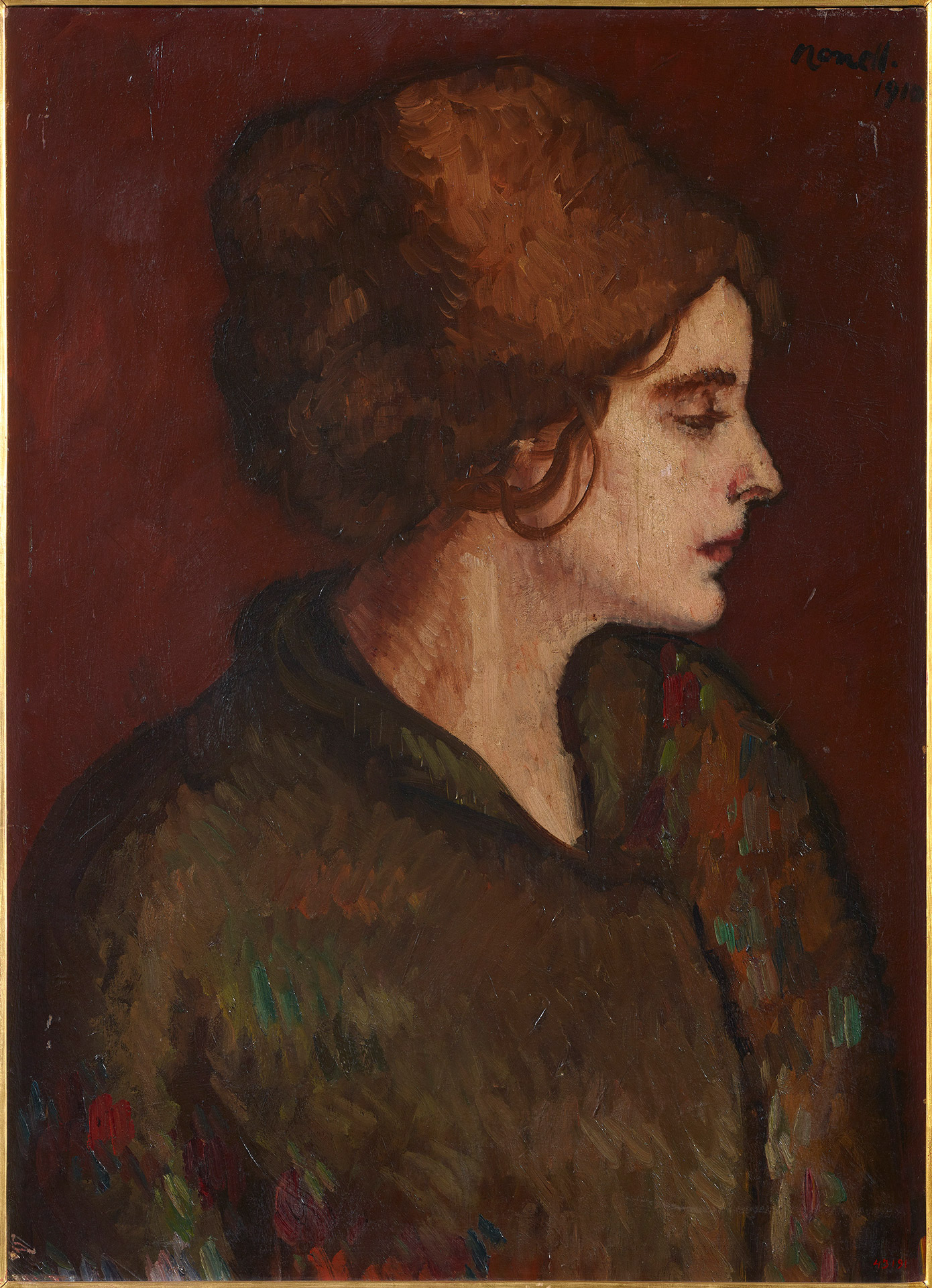
Isidre Nonell (Barcelona, 1873-1911)
Dolors
1910
WORK INFORMATION
Oil on panel, 71 x 53 cm
OTHER INFORMATION
Signed and dated in the upper right-hand corner: "Nonell / 1910"
Isidre Nonell was the leader of the Catalan postmodernist generation, by virtue of his strong personality as well as his theoretical knowledge and originality as a painter. In terms of style, his work can be unequivocally situated in the finest line of European Post-Impressionism. An admirer of Degas, Manet, Monet, Toulouse-Lautrec and Daumier, his interpretation of their painting was nevertheless profoundly personal. Born in Barcelona in 1873, Nonell showed a propensity for painting at an early age, and Joaquim Mir and Xavier Nogués were among his first friends. The most important of his early teachers was Lluís Graner. His first known works have a luminous quality reminiscent of the Italian Macchiaioli. However, it was not long before his art began to denote the influence of Rusiñol's Parisian style.
The time spent at the Llotja School of Fine Arts in Barcelona, where he enrolled in 1893, was significant primarily because it brought together the friends and painters who would form the Colla del Safrà group: Canals, Pichot, Mir, Juli Vallmitjana and himself. Nonell's oil paintings from this period were still informed by the Casas-Rusiñol model, clinging to suburban themes, although instead of the Montmartre suburbs depicted by those masters, in the work of Nonell and his companions we find a suburbia close to Barcelona. Moreover, in contrast to the gentle realism of the modernists, in the creations of this youthful group we see less idealisation, a more honest vision of reality.
The drawing Cabaret Singer can be dated to this early period based on its theme. The fast, energetic lines have the roughness of the artist's early drawing attempts—he still had trouble, for instance, with the details of the hands, though Nonell never developed a taste for painting or sketching this part of the body—and we therefore believe that this drawing was made before 1900.
Later on, Nonell's art took a turn towards stark realism when, following a stint in Bohí Valley in the Pyrenees, he began to portray individuals suffering from cretinism, a common affliction in that mountainous region. After a time in Paris he returned to Barcelona, but he did not abandon his "black" themes, focusing now on gypsy women, which he never attempted to render as quaint folk types but as emphatically vigorous presences with a sober pathos.
In 1907 the painter's work underwent an important change: while still retaining his almost exclusive devotion to female figures, he set aside his wretched types and gypsy models and began painting white women in obviously relaxed poses. The colours of his paintings grew lighter, as if the artist had been infected by the spirit of optimism that characterised the Catalan art scene at the time, dominated by Noucentisme—the new art, the art of the 1900s. Dolors clearly dates from this final period of Nonell's painting career, in which a placid serenity—though always tinged with gravity—had replaced his early devotion to stark reality. [Francesc Fontbona]

